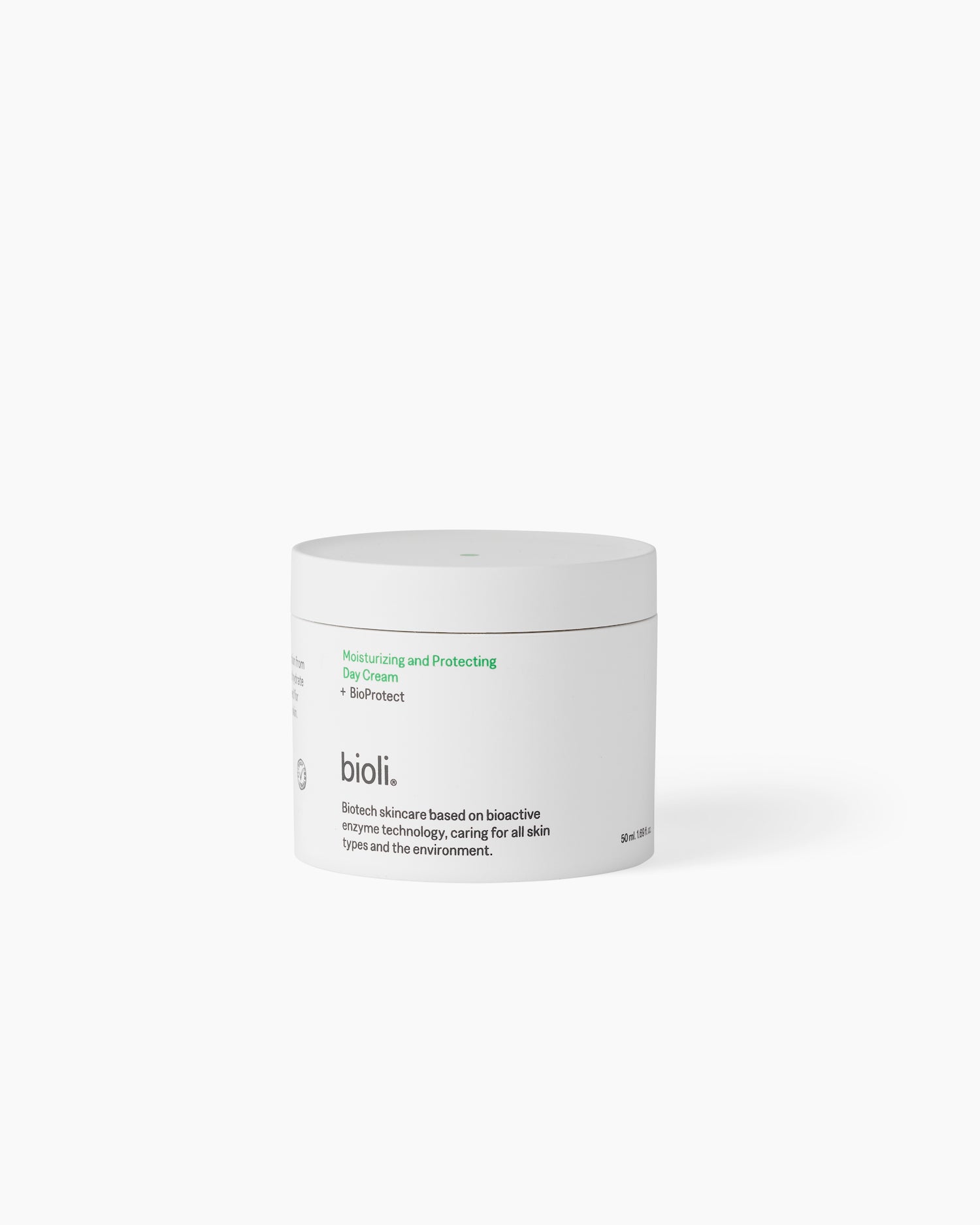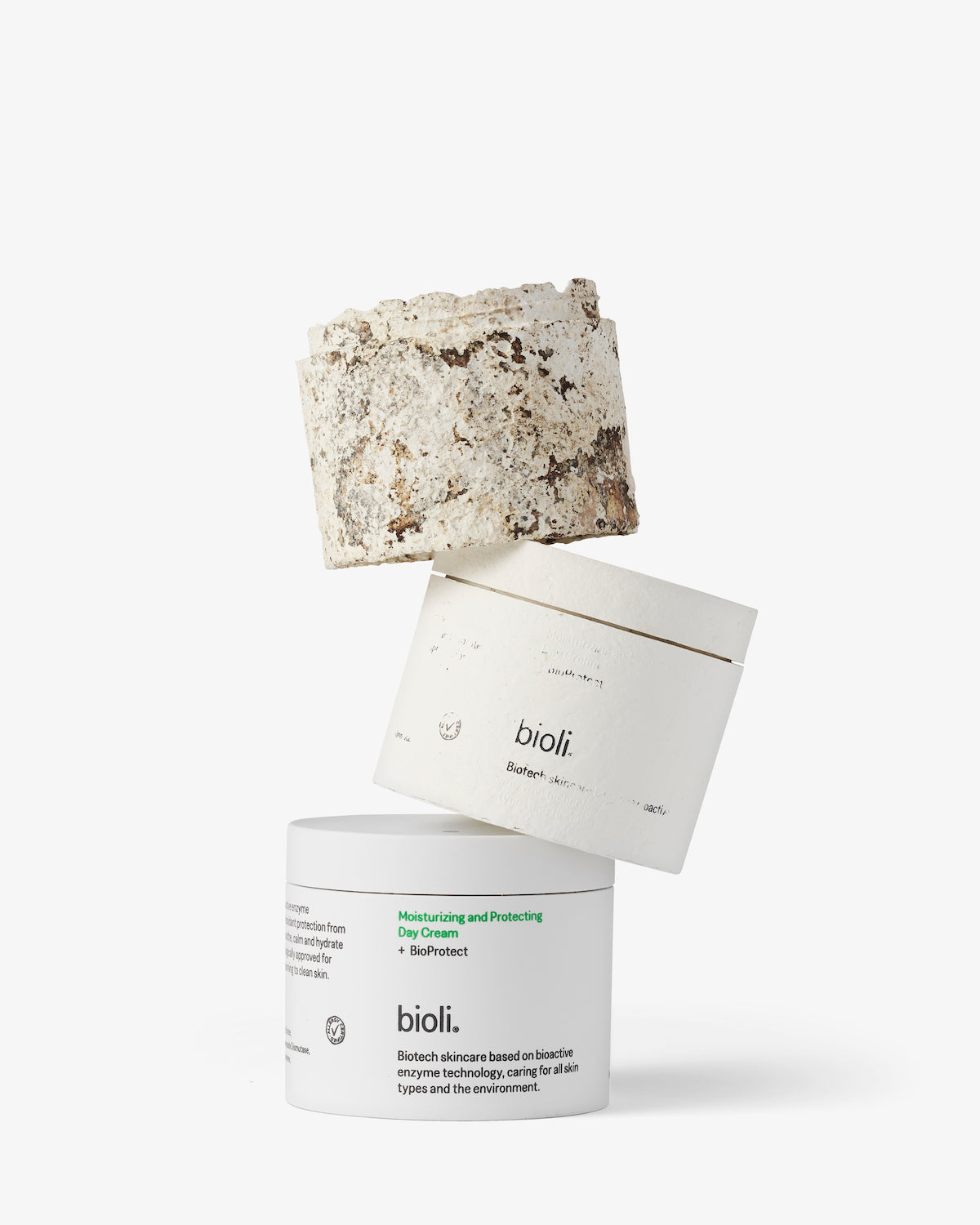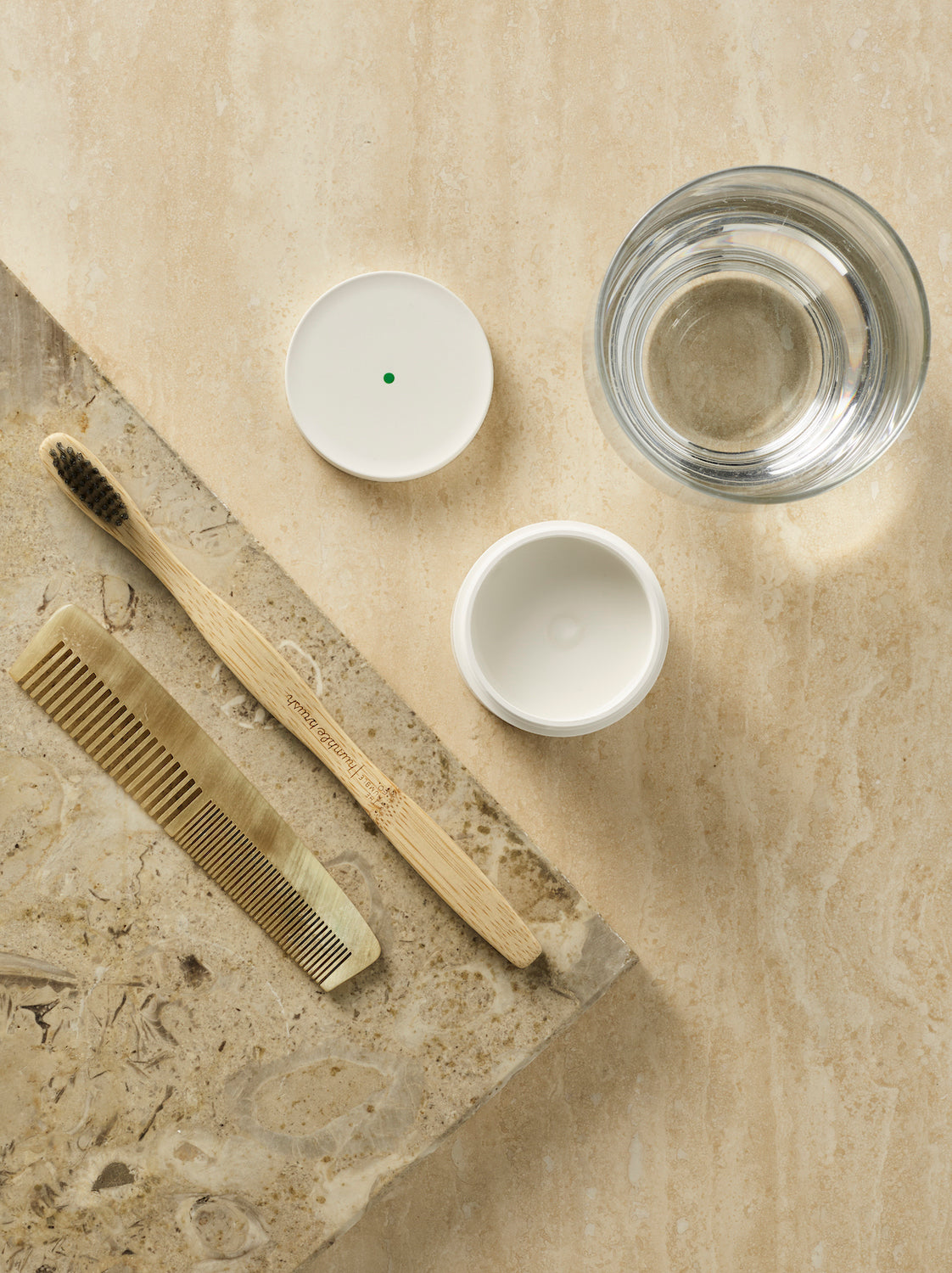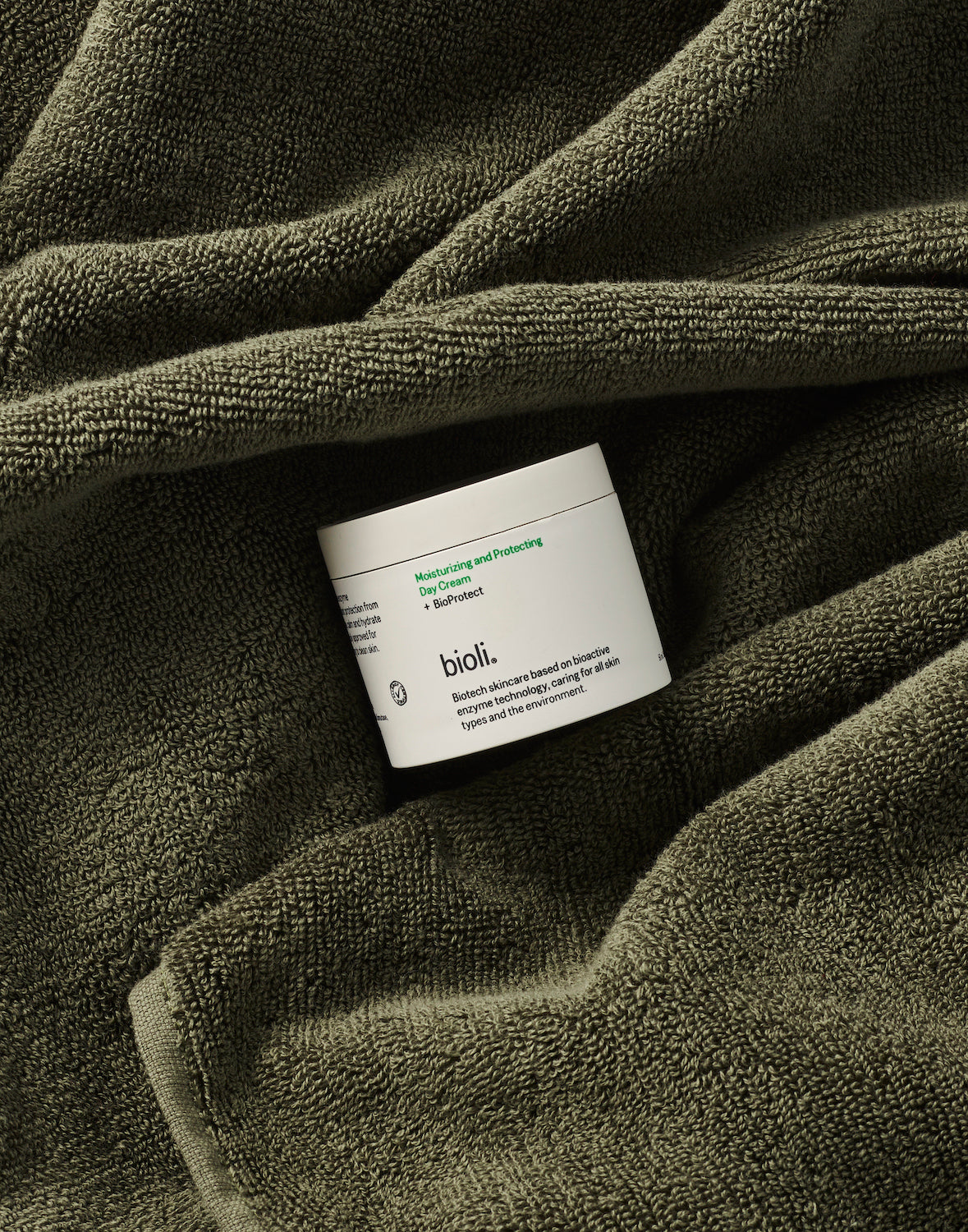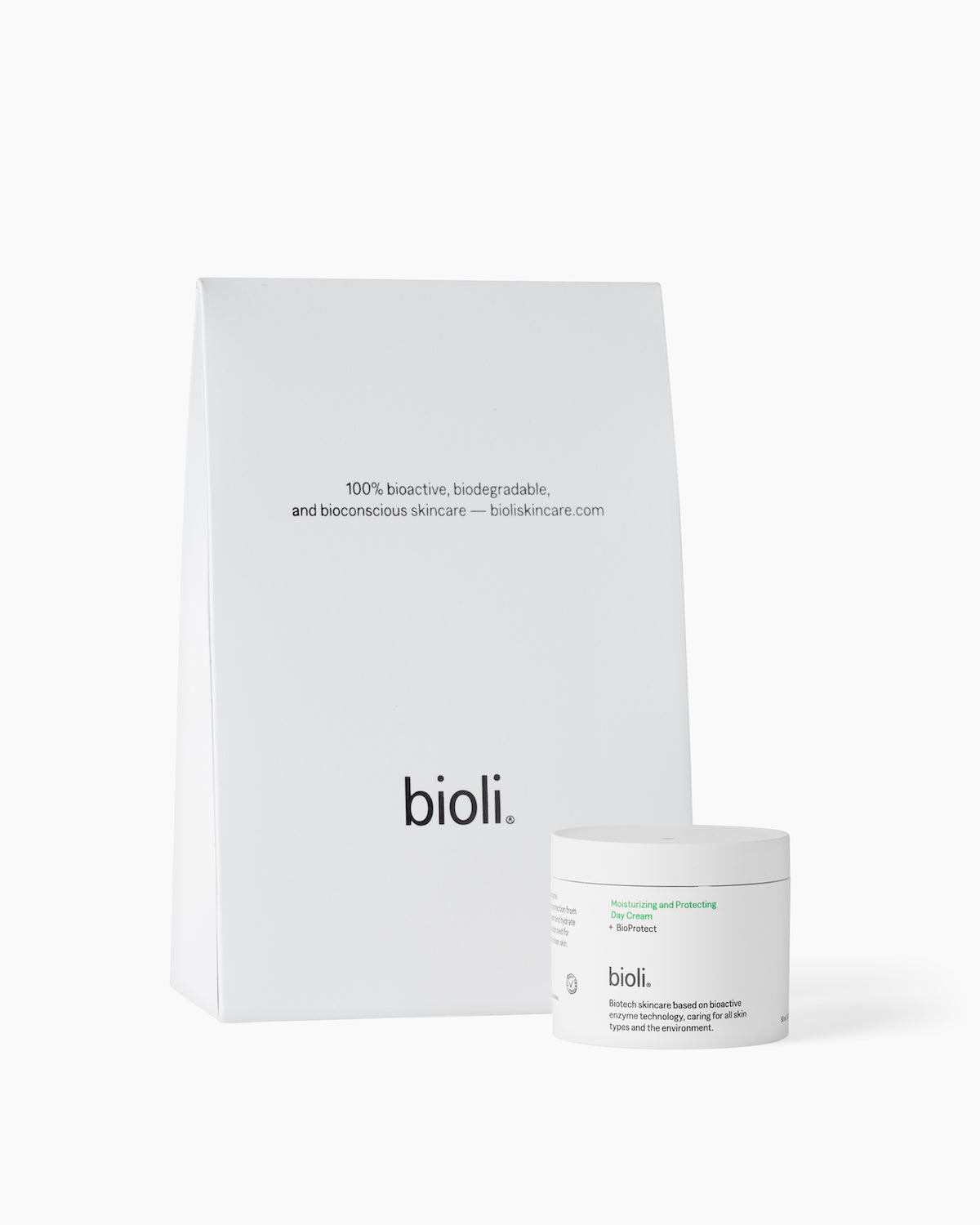If you suffer from a skin disorder or suddenly experience sensitive skin, you have likely consulted a dermatologist or your general practitioner, who may have prescribed medication in the form of pills or creams, antibiotics, and/or recommended over-the-counter creams for general nurturing. You may not have considered talking to a psychologist or psychiatrist, as you don’t see the condition as a psychiatric disorder.
More and more studies now point to a connection between our skin and mind and how skin disorders and feelings are linked, highlighting the need to approach this more holistically. Suffering from a skin disorder can lead to severe mental issues:
"Many suffers from anxiety and depressions but there also other emotions at play such as anger, guilt and shame",
says: Sara Alsing, Clinical psychologist in a recent episode of the podcast Skin by Anne Christine Persson.
It also works the other way around, meaning that if you suffer from a mental disorder, it can also affect your skin. Thus, what were once two separate practices - dermatology and psychology - are now fortunately receiving more attention under the term 'Psycho dermatology', offering proper and better treatment.
A new field of medicin: Psychodermatology
Starting with the basics, Psychodermatology is a new field, which addresses the interaction between mind and skin. It’s an interdisciplinary field that focuses on the connection between psychological factors and skin conditions. It explores how emotions, stress, and mental health can impact skin health and vice versa, often involving treatments that address both the psychological and dermatological aspects of various skin disorders.
In a review on Psychodermatology by Medical Doctor Mohammad Jafferany, based on a search of the literature from 1951 to 2004, he explains the psychological aspect in more details:
"The interaction between nervous system, skin, and immunity has been explained by release of mediators from NICS (neuro-immuno-cutaneous system). In the course of several inflammatory skin diseases and psychiatric conditions, the NICS is destabilized. In more than one third of dermatology patients, effective management of the skin condition involves consideration of associated psychologic factors. Dermatologists have stressed the need for psychiatric consultation in general, and psychological factors may be of particular concern in chronic intractable dermatologic conditions, such as eczema, prurigo, and psoriasis."
In fact, we know that the development of our nervous system starts early in embryonic development. The outer layer of the embryo, the ectoderm, gives rise to the skin and the nervous system at approximately the same time. That’s an interesting thought, and why some scientist say that there’s evidently a connection between the two.
Classification of psychodermatologic disorders
In the first definitive textbook on Psychodermatology: Psychocutaneous Medicine, the autors John Y. M. Koo and Chai Sue Lee divide psychodermatological disorders into five categories. Below we have prepared a short summary, explaining each of the different categories.
-
Psychophysiological Disorders
Cases where genuine skin disorders are exacerbated by stress. Skin conditions like atopic dermatitis, psoriasis, acne vulgaris, seborrheic dermatitis, and dyshidrosis fall under this category.
-
Primary Psychiatric Disorders
Patients that don't have actual skin diseases but exhibit self-induced skin manifestations due to serious psychological issues. Examples include neurotic excoriations, factitious dermatitis, delusions of parasitosis, and trichotillomania.
-
Secondary Psychiatric Disorders
Involves psychological problems arising as a result of disfiguring skin diseases like vitiligo or alopecia areata. The emotional impact is the primary concern rather than the physical symptoms.
-
Cutaneous Sensory Disorders
Patients experience unpleasant skin sensations without apparent organic causes, similar to chronic pain syndrome. These cases can be divided into those with and without psychiatric findings.
-
Use of Psychopharmacological Agents
In some cases, psychotropic medications may be more effective than traditional dermatological treatments. Examples include using antidepressants like doxepin for antipruritic effects or amitriptyline for pain relief.
As stated, each of the category has unique characteristics and therefore also treatment options, so identifying a category for a disorder could be a good starting point for further exploration.
Thinking more holistically
In addition to classification or instead of classification and as pointed to earlier, it’s also recommended to regard skin disorders more holistically.
"Within dermatology, we have a tendency of thinking that something is broken which we need to fix and then we prescribe medication or a creme but because of this connection (that we know exists) between the brain and the skin, we need to be much more holistic in our approach",
says: Kasper Alsing, Medical Doctor og PhD student in Dermatology at Bispebjerg Hospital, Denmark in an interview in the same podcast mentioned earlier.
So instead of seeing it as something that needs to be resolved, it might be worth while taking a step back and view it all more holistically.
First steps - What Can You Do?
We learned that skin disorders can cause elevated levels of psychological distress, and that there’s certainly a need for evidence-based psychological treatments integrated with medical care.
Inspired by literature around Psychodermatology and Sara Alsing’s reflections in the same podcast mentioned earlier, here are three tips related to self-compassion, that you can work with:
1. Recognition
The first step is recognizing the feelings associated with your skin disorder. It can be difficult, and it's okay to feel anger, shame, and other emotions. Try to meet yourself with kindness and recognition rather than criticism and self-evaluation.
2. Gentle reminder
Remind yourself that it's normal to experience skin disorders, and many others suffer from the same condition. Instead of isolating yourself, try to seek out fellowship.
3. Practice mindfulness
It's about being present with your feelings and thoughts around your skin disorder. Remember that what can affect us the most mentally is not necessarily the current state of our skin, but rather our thoughts and emotions about it. Thoughts like "Will this last forever?" or "Will I ever find peace with how I look?" can be particularly challenging.
Mind-body therapies
In addition to self-compassion, there are several other techniques to explore based on what feels right for you. Collectively, they are called Mind-body therapies (MBTs). MBTs are defined as 'therapies that focus on the interaction between the mind and the body, with the intent to use the mind to influence physical functions and directly affect health'. These therapies may ameliorate some of the harmful physiological changes attributed to stress and help reduce harmful behaviors. They are all considered low risk and relatively low cost, and provide mental and physical health benefits, so they might be worth exploring together with a professional within the field.
MBTs include:
- Biofeedback
- Behavioral Therapy and Cognitive Behavioral Therapy
- Meditation
- Hypnosis
- Relaxation Therapies That Reduce Arousal: Guided Imagery, Progressive Muscle Relaxation, and Others
Rachel Graubard and Ariadna Perez-Sanchez from Baylor College of Medicine, Houston has together with Rajani Katta from Department of Internal Medicine, University of Texas written a great article on these different MBTs tittled: ‘Stress and Skin: An overview of mind body therapies as a treatment strategy in dermatology’ if you wish to exploit this further.
Hopefully, this article has provided some valuable tools and tips on how to better cope with a skin disorder. It is easier said than done, but instead of negative self-talk, it's important to accept where you are and express how difficult it is. Remember that no issue is too small to seek help if it affects you. As Kasper Alsing in the same podcast mentioned earlier, puts it:
"Even small skin disorders, such as melasma, which is a cosmetic issue, can have a significant impact on how people feel."


